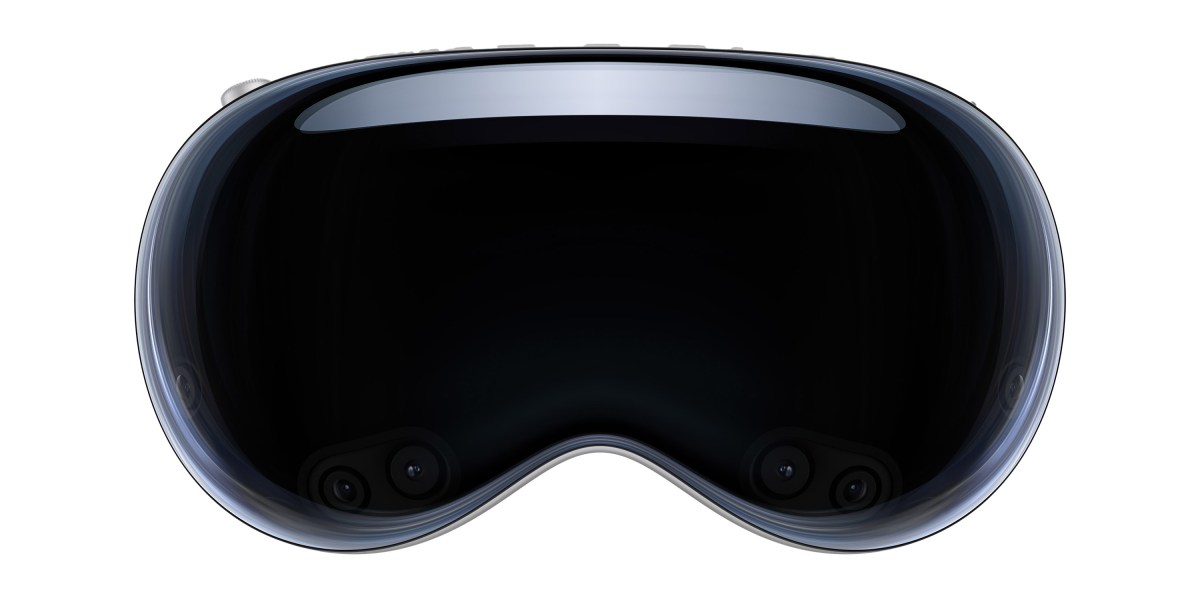These minuscule pixels are poised to take augmented reality by storm

The HMZ-T1 headset performed best with 3D films, which proved to be a fad. But Sony didn’t give up on micro-OLEDs, and in 2018 it announced a 0.5-inch micro-OLED display that reduced the distance between pixels from 7.8 to 6.3 micrometers (the same as the larger displays found in the Vision Pro), an innovation made possible by a breakthrough that placed the color filter closer to the OLED’s light-emitting organic material. With a display this small, any subtle change in the angle of light emitted from red, blue, and green subpixels can hurt color performance. Moving the color filter improves the viewing angle of each pixel, which makes a smaller display possible without compromising image quality.
Micro-OLEDs benefit from some of the traditional strengths of light-emitting diodes made with organic films. Each pixel is self-emissive, which means its brightness is zero when it’s “off.” The LCDs in most headsets can’t achieve this, and as a result, darker scenes have a hazy, gray glow. And when micro-OLEDs are on, they’re on. The Vision Pro’s displays are quoted at a peak brightness of 5,000 nits, the industry’s go-to measure of brightness. It’s a 50-fold improvement over Meta’s Quest 2, which hits just 100 nits. (Meta hasn’t revealed the Quest 3’s brightness, but it’s likely similar.)
The Vision Pro is likely to quicken the adoption of micro-OLED technology. But despite its many strengths, those miniature OLEDs still have some shortcomings. Michael Murray, CEO of Kopin, a display company in Westborough, Massachusetts, notes that micro-OLED displays are excellent for moving images, such as movies, but sometimes less so for static text—a reason, he says, why Meta’s Quest headsets have stuck with LCD. While micro-OLED displays can be bright, the organic molecules inside them can degrade over time, a phenomenon known as burn-in. Micro-OLED also fails to entirely resolve the design issues of Google Glass: the display is improved, but the headset is even more conspicuous.
Fortunately, micro-LEDs offer a solution.
Truly microscopic
Micro-OLED and micro-LED displays differ in the details, but their production shares broad similarities. Both pair a silicon “backplane,” which provides structure and power, with a display “frontplane” that creates visible light. Each is named for the type of frontplane used: a layer of organic material that emits light in response to an electric current in the case of micro-OLED displays, and a very small array of electronic diodes made from semiconductors in the case of micro-LEDs.
Micro-LED display technology is not as mature as micro-OLED, but the possibilities are alluring. “Micro-LED happens to be the best of all worlds,” says Murray. “It has the best display quality, it has longevity, doesn’t have burn-in issues, has high brightness that you can control … that’s where the future is going.”
Mojo Vision, a display technology company based in Saratoga, California, was among the first companies to realize the LED’s potential in tiny devices. It made waves in 2020 with a contact lens with a flexible, transparent AR display. The company has since abandoned the contact lens to focus just on the display, and in 2023, Mojo Vision demonstrated micro-LED displays with an astounding 28,000 pixels per inch. That works out to a pixel pitch—the distance between the centers of two adjacent pixels—of just 1.87 micrometers, smaller than some bacteria and a third the size of what you’ll find in the Apple Vision Pro.





